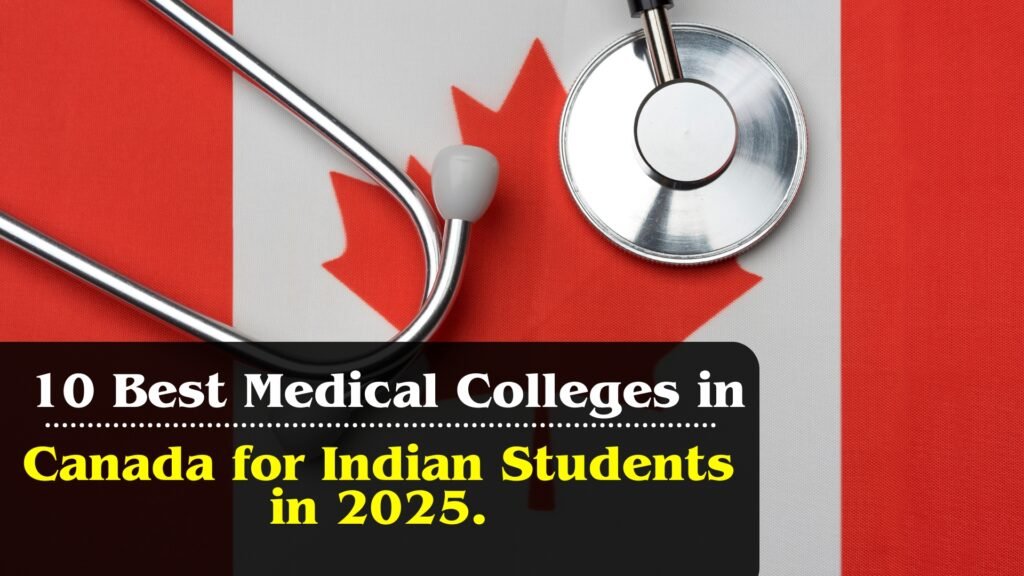Entry Criteria for German Universities: A Guide for International Students

Entry Criteria for German Universities: A Guide for International Students Germany is a top destination for international students due to its world-class education system, diverse study programs, and student-friendly policies. However, gaining admission requires meeting specific entry criteria. This guide outlines the essential requirements for international students aspiring to study in Germany. 1. University Entrance Qualification (HZB) The Hochschulzugangsberechtigung (HZB), or higher education entrance qualification, determines whether an applicant’s educational background meets the standards for university admission in Germany. Common forms of HZB include: High School Diplomas: A recognized school-leaving certificate is required for undergraduate programs. University Entrance Exams: Some countries have exams that qualify students for university admission. Preparatory Courses: If qualifications do not meet HZB standards, students may need to attend a Studienkolleg (preparatory course) and pass the Feststellungsprüfung (FSP) to qualify for university studies. 2. Language Proficiency Requirements Language proficiency is crucial, as most programs in Germany are taught in German. Students must prove their German skills through recognized exams such as: Deutsche Sprachprüfung für den Hochschulzugang (DSH) Test Deutsch als Fremdsprache (TestDaF) Goethe-Zertifikat (C1 or C2 level) telc Deutsch C1 Hochschule Österreichisches Sprachdiplom (ÖSD) Deutsches Sprachdiplom der Kultusministerkonferenz (DSD) – Level 2 For English-taught programs, students must provide proof of English proficiency through: TOEFL (Minimum score: 60-80 iBT, varies by university) IELTS (Minimum band: 6.0 or higher) Cambridge English Qualifications (B1 to C2) UNIcert® (Minimum level I or II) TOEIC (Accepted by some universities) 3. Additional Academic Requirements Apart from HZB and language proficiency, students must submit: Official Transcripts: Academic records from previous institutions. Motivation Letter: Explains the reasons for choosing the program and university. Reference Letters: Letters from teachers or professionals endorsing the applicant’s abilities. CV/Resume: A summary of educational background 4. Visa Requirements Non-EU students must obtain a student visa. The visa application process requires: Valid Passport Proof of Health Insurance Proof of Financial Resources (e.g., blocked account with a minimum amount of €11,208 per year) University Acceptance Letter 5. Scholarships and Financial Aid Germany offers numerous scholarships to support international students. The DAAD (German Academic Exchange Service) provides financial aid covering tuition, living expenses, and research costs. Other funding sources include: Erasmus+ Deutschlandstipendium University-Specific Scholarships 6. Application Process Students can apply through centralized platforms such as uni-assist, which simplifies document submission. Many universities also have direct application portals. Conclusion:- Studying in Germany offers international students excellent academic and career opportunities. By understanding and meeting the necessary entry requirements—including academic qualifications, language proficiency, and visa regulations—students can successfully gain admission to top German universities. Frequently Asked Questions (FAQs) 1. Can I study in Germany without knowing German? Yes, many universities offer programs in English. However, students must prove their English proficiency through exams like IELTS or TOEFL. 2. What should I do if my school diploma is not recognized in Germany? If your diploma does not meet the entry requirements, you may need to complete a Studienkolleg (preparatory course) and pass the Feststellungsprüfung (FSP) exam. 3. Do German universities charge tuition fees? Public universities generally do not charge tuition fees for international students, except in Baden-Württemberg, where non-EU students may pay around €1,500 per semester. However, administrative fees of €100-€400 per semester apply. 4. How much money do I need to prove for a German student visa? As of 2024, international students must have at least €11,208 in a blocked account to cover living expenses for one year. 5. What is the best time to apply to German universities? The application deadlines are usually July 15 for the winter semester and January 15 for the summer semester. Some universities have different deadlines, so it’s essential to check specific university websites.
Why Study in France? A Comprehensive Guide

Why Study in France? A Comprehensive Guide Studying in France offers an extraordinary opportunity for students looking for high-quality education, cultural enrichment, and diverse career prospects. With its renowned academic excellence, emphasis on research and innovation, and vibrant lifestyle, France stands out as a premier destination for higher education. This blog will explore the compelling reasons to pursue your studies in France, highlight some of the top universities, discuss living costs, and provide insights on scholarships and admission requirements. The Allure of French Education World-Class Education French universities are celebrated for their rigorous academic standards and a wide range of programs across various fields, including arts, sciences, engineering, and business. The country boasts a strong emphasis on research, making it a hub for innovation and scientific advancement. Diverse Programs: Students can choose from numerous disciplines, with many institutions offering specialized courses in engineering, business management, arts and humanities, and health sciences. Schools like HEC Paris and INSEAD are recognized globally for their business programs, while institutions like the Institut Polytechnique de Paris excel in engineering. Research Opportunities: Many universities have strong ties to research institutions and industry partners, allowing students to engage in cutting-edge projects and gain valuable hands-on experience. Cultural Experience Studying in France is not just about academics; it also involves immersing yourself in a rich cultural landscape. The country’s vibrant history, art, and gastronomy create an enriching environment for international students. Culinary Delights: French cuisine is renowned worldwide, and students have the chance to explore local markets, try regional specialties, and even participate in cooking classes. Art and History: France is home to numerous museums, galleries, and historical landmarks. From the Louvre to the Palace of Versailles, students can immerse themselves in a treasure trove of art and history. Multicultural Atmosphere: France’s diverse population fosters a multicultural environment where students can interact with peers from various backgrounds, enhancing their global perspective. Top Universities in France France boasts several prestigious universities that consistently rank highly on global education scales. Below are some of the leading institutions renowned for their academic programs and research output: Université PSL (Paris Sciences et Lettres) is ranked 24th in the QS World Rankings 2025, 40th in the THE Rankings 2024, and 41st in the ARWU Rankings 2023. Université Paris-Saclay holds the 71st position in QS 2025, is ranked 58th in THE 2024, and has a strong ranking of 15th in ARWU 2023. Sorbonne University is positioned 59th in QS 2025, 75th in THE 2024, and 46th in ARWU 2023. Institut Polytechnique de Paris stands at 38th in QS 2025, 71st in THE 2024, and significantly lower at 301st in ARWU 2023. Université Grenoble Alpes is ranked 294th in QS 2025, 301st in THE 2024, and has a better position of 101st in ARWU 2023. These universities are recognized for their quality of education, international collaborations, and strong research output across various fields. Living Costs in France Understanding the cost of living in France is essential for international students planning their studies. While expenses vary significantly by region, France is generally considered more affordable compared to other Western countries. Monthly Expenses On average, students can expect to spend between €800 and €1,500 per month. Here’s a breakdown of common expenses: Accommodation: Renting a room can cost between €300 and €700, depending on the city. Major cities like Paris tend to have higher rental prices, while smaller towns may offer more affordable options. Food: Monthly grocery expenses typically range from €150 to €250. Students can save money by cooking at home and shopping at local markets. Transportation: France has an efficient public transportation system. A monthly pass for public transport usually costs around €70. Cost of Living by City Paris: As the capital, Paris has a higher cost of living, but the cultural and professional opportunities available can make it worth the investment. Lyon and Marseille: These cities offer a lower cost of living while providing a vibrant cultural scene and strong educational institutions. Smaller Cities: Cities like Bordeaux and Nantes can be more affordable for students, allowing for a more budget-friendly lifestyle. Scholarships and Financial Aid Numerous scholarship opportunities exist for international students wishing to study in France. These scholarships significantly reduce the financial burden of studying abroad. Types of Scholarships Eiffel Excellence Scholarship Program: This prestigious scholarship is aimed at attracting top international talent and covers tuition and living expenses. Charpak Scholarship: Offered by the French Embassy in India, this scholarship is specifically designed for Indian students, covering tuition fees and living costs. University-specific Scholarships: Many universities in France offer their own scholarships based on merit or financial need, providing further financial assistance. Tuition Fees Tuition fees in France vary based on the type of institution: Public Universities: Generally charge lower fees, approximately €170 per year for EU students. Non-EU students may pay between €2,500 and €10,000 depending on the program. Grandes Écoles: These elite institutions may charge between €5,000 and €15,000 annually. Admission Requirements The admission process can vary by institution, but generally includes the following: Academic Transcripts: Proof of previous education (high school diploma or equivalent). Language Proficiency: Proficiency in French or English, depending on the program (usually demonstrated through tests like TOEFL or IELTS for English). Personal Statement: A statement outlining your motivations and goals. Letters of Recommendation: Typically required from previous educators or employers. Grades Required Most universities in France require a minimum grade point average (GPA) for admission. Generally: A GPA of around 3.0 (on a 4.0 scale) is often expected for undergraduate programs. For postgraduate programs, higher academic performance may be required. Frequently Asked Questions(Faq’s) 1. Can I study in France for free? Yes, EU citizens may access free education at public universities. Non-EU students typically pay higher fees but can apply for scholarships. 2. What are the top-ranked universities in France? The top-ranked universities include Université PSL, Université Paris-Saclay, Sorbonne University, and Institut Polytechnique de Paris. 3. What is the average tuition fee for international students? Tuition fees range from €2,500 to €10,000
Understanding Minimum PTE Scores Required for Canada in 2025

Understanding Minimum PTE Scores Required for Canada in 2025 Canada continues to be a popular destination for international students due to its world-class education, diverse culture, and excellent career opportunities. Among the requirements for admission to Canadian universities, demonstrating English proficiency is crucial, and the Pearson Test of English (PTE) has emerged as a widely accepted standard. This comprehensive guide explores the minimum PTE scores required for various educational levels, visa applications, and more. Minimum PTE Scores for Canadian Universities The PTE score requirements vary depending on the level of study and the specific university program. Below is an overview of the typical minimum scores: Diploma programs require a minimum overall score of 45, with a minimum score of 36 in each module. Undergraduate programs require a minimum overall score of 50, with at least 45 in each module. Postgraduate programs have higher requirements, needing a minimum overall score of 65, with a minimum of 50 in each module. Undergraduate Programs For undergraduate studies, most universities require an overall score of 55 to 65. Competitive programs, such as engineering or medical sciences, may demand scores of 65 to 70 or higher. Postgraduate Programs Postgraduate programs typically require a minimum overall score of 60 to 70, with some programs, especially those in research or professional fields, asking for scores as high as 70 to 80. Diploma Programs Diploma programs generally have lower entry requirements, with a minimum overall score of 45, making them accessible to a wider range of applicants. Universities in Canada Accepting PTE Scores of 50 While many Canadian universities require higher PTE scores, several institutions accept scores as low as 50, particularly for less competitive programs. These include: University of Ottawa York University Concordia University University of Alberta McMaster University These universities provide a range of programs for students with varying English proficiency levels. It is advisable to review specific program requirements, as they may differ within the same institution. PTE Score Requirements for Canada Student Visa The Canadian Student Visa requires applicants to meet minimum English proficiency standards, which align closely with university admission requirements. Below are the general score guidelines: Diploma Programs: Minimum overall score of 45 Undergraduate Programs: Minimum overall score of 50 Postgraduate Programs: Minimum overall score of 60 Demonstrating English proficiency through your PTE score strengthens your visa application and showcases your readiness for academic success in Canada. PTE Scores and Canadian Permanent Residency (PR) As of now, PTE scores are not accepted for Permanent Residency (PR) applications in Canada. However, changes are anticipated by the end of 2023, where PTE may become a recognized standard for PR pathways. This development is significant for international students planning long-term stays in Canada and aspiring to transition from student visas to PR status. How to Improve Your PTE Score Achieving the required PTE score can be challenging, but with proper preparation, it is attainable. Here are some strategies to improve your performance: Understand the Test Format: Familiarize yourself with the PTE Academic structure, including speaking, writing, reading, and listening sections. Practice Regularly: Use official PTE preparation materials, online mock tests, and practice questions. Enroll in Preparation Courses: Consider joining a PTE preparation course to receive expert guidance and personalized feedback. Work on Weak Areas: Identify and focus on sections where you score lower during practice. Develop Time Management Skills: Efficiently managing your time during the test can significantly impact your score. Frequently Asked Questions 1. What is the minimum required PTE score for top Canadian universities? Most top universities require a minimum score of 60 to 70, depending on the program and its competitiveness. 2. Is a PTE score of 57 accepted by Canadian universities? Yes, some universities may accept a score of 57, particularly for less competitive programs. However, competitive programs may demand higher scores. 3. Can I apply to Canadian universities with a PTE score of 50? Yes, several universities accept scores of 50, especially for diploma programs and certain undergraduate courses. 4. What if I don’t meet the minimum PTE requirements? Many universities offer conditional admissions, allowing students to enroll in English preparatory courses to improve their language skills before starting their main program. 5. How can I stay updated on changes to PTE requirements for PR? Stay informed by regularly checking updates on official Canadian immigration websites and announcements from PTE Academic. Conclusion:- Understanding the minimum PTE scores required for Canadian universities and visas is an essential step in planning your educational journey. With proper preparation and research, international students can meet these requirements and unlock a world of opportunities in Canada. Whether you aim for a diploma, undergraduate, or postgraduate program, Canada offers a supportive environment for academic and personal growth. Start your PTE preparation today and take the first step toward achieving your dreams in Canada.
Studying Nursing in Australia: A Comprehensive Guide for International Students in 2025

Studying Nursing in Australia: A Comprehensive Guide for International Students in 2025 Australia is a leading destination for international students pursuing nursing due to its world-class education system, diverse course offerings, and excellent career prospects. This guide provides an in-depth look into studying nursing in Australia, covering fees, courses, admission requirements, scholarships, living costs, and more. Nursing Courses in Australia Australia offers a variety of nursing programs designed for different levels of education and specializations. Here are the main nursing courses available: Diploma of Nursing This course typically lasts 18-24 months and qualifies graduates as Enrolled Nurses, allowing them to provide basic nursing care under the supervision of a Registered Nurse. Bachelor of Nursing A three-year undergraduate program that prepares students for roles as Registered Nurses, equipping them with the skills to deliver high-quality patient care. Master of Nursing A postgraduate program lasting 1-2 years, tailored for individuals seeking advanced practice roles, research opportunities, or leadership positions in healthcare. Graduate Certificates and Diplomas Shorter programs focusing on specialized areas of nursing, such as mental health, aged care, or clinical leadership. Top Universities for Nursing in Australia Australia is home to several prestigious institutions renowned for their nursing programs. Below are some of the top universities: University of Sydney is ranked 14th in the QS World Rankings 2023. It boasts a high graduate employment rate of 98% and offers exceptional facilities for students. Monash University holds the 21st position globally. It is known for its diverse specializations and strong clinical placements, providing students with extensive practical experience. University of Technology Sydney is ranked 24th and is recognized for its innovative teaching methods and cutting-edge research, making it a leader in modern education. The University of Melbourne stands at 27th in the world. It offers comprehensive nursing programs with a strong emphasis on research excellence. Griffith University is ranked 29th and focuses on hands-on experience in various healthcare settings, ensuring students gain practical knowledge in real-world environments. Affordable Nursing Courses in Australia For international students on a budget, several universities offer affordable tuition rates. Here are some of the more economical options: James Cook University offers a Graduate Certificate of Nursing with a tuition fee of AUD 13,000. Monash University provides a Master of Advanced Nursing, and the tuition fee is AUD 33,000. Griffith University has a Bachelor of Nursing (Hons) program, with an annual tuition fee of AUD 38,000. On average, tuition fees for nursing programs range from AUD 25,000 to AUD 50,000 annually, depending on the course and institution. Admission Requirements and Application Process Admission Requirements To study nursing in Australia as an international student, you need to meet specific academic and language requirements. Below are the key steps: Educational Qualifications: Completion of secondary education with strong grades in science subjects (e.g., biology, chemistry, or health sciences). English Language Proficiency: Proof of proficiency through tests such as IELTS (minimum score of 7.0) or TOEFL (equivalent score). GPA Requirements: A minimum GPA (typically around 5.5 or equivalent) may be required for bachelor’s or master’s programs. Application Process: Submit an online application via the university’s official portal. Provide necessary documents, including academic transcripts, proof of English proficiency, personal identification, and a statement of purpose. Pay the application fee (if applicable). Scholarships for International Students Australia offers numerous scholarships to help international students finance their education. Below are some notable options: Monash International Scholarship for Excellence: Provides up to AUD 10,000 for high-achieving students. Griffith Remarkable Scholarship: Offers up to AUD 20,250 based on academic merit. Western Union Foundation Global Scholarship Program: Awards up to AUD 2,500 for eligible students. Students are encouraged to check individual university websites for additional scholarship opportunities and application guidelines. Cost of Living in Australia International students should consider the overall cost of living in addition to tuition fees. Here is an estimate of annual living expenses: Accommodation: AUD 10,000 – AUD 15,000 (shared apartments or university housing). Food and Groceries: AUD 3,000 – AUD 5,000. Transportation: AUD 1,500 – AUD 2,500. Miscellaneous Expenses: AUD 2,000 – AUD 3,000 (includes leisure and other personal expenses). On average, the cost of living in Australia ranges between AUD 15,000 and AUD 20,000 per year. Benefits of Studying Nursing in Australia Pursuing a nursing degree in Australia offers numerous advantages, including: High-Quality Education: Australian universities are globally recognized for their rigorous academic standards and innovative teaching methods. Career Opportunities: The demand for skilled nurses is consistently high both in Australia and internationally, providing excellent job prospects post-graduation. Cultural Diversity: Studying in Australia exposes students to a rich, multicultural environment, enhancing their personal and professional growth. Support Services: Universities offer dedicated support for international students, including career counseling, mental health services, and academic assistance. Frequently Asked Questions 1. What is the duration of nursing programs in Australia? Bachelor’s programs typically take three years, while diplomas last about 18-24 months. Master’s programs can take 1-2 years. 2. Can international students work while studying? Yes, international students can work up to 40 hours per fortnight during the semester and unlimited hours during breaks. 3. Are part-time study options available? Many universities offer part-time study options to provide flexibility for students. 4. What is the job outlook for nurses in Australia? The demand for nurses is growing due to an aging population and increasing healthcare needs, ensuring strong job prospects. 5. How can I apply for scholarships? Most scholarships require an application through the university’s scholarship portal, along with relevant documents such as academic transcripts and a statement of purpose. Conclusion:- Studying nursing in Australia is a rewarding journey that combines academic excellence, practical experience, and global career opportunities. With its world-class universities, diverse cultural environment, and robust support for international students, Australia is an ideal destination for aspiring nurses. Begin your application process today to take the first step toward a fulfilling career in healthcare.
Benefits of Studying in the USA for Indian Students

Benefits of Studying in the USA for Indian Students Studying in the USA has become a top choice for Indian students seeking higher education, thanks to its globally recognized universities, vibrant multicultural environment, and vast career opportunities. Let’s explore why pursuing a degree in the USA can be a life-changing experience for Indian students. Why Choose the USA for Higher Education? The USA stands out as an educational destination for several reasons: World-Class Institutions: Home to many of the top-ranked universities, the USA offers high academic standards and unparalleled research facilities. Diverse Programs: From engineering to business, arts, and sciences, the USA provides a vast range of programs to suit every interest and career goal. Multicultural Experience: The USA’s diversity fosters cross-cultural learning and creates a rich environment for personal growth. Key Benefits of Studying in the USA for Indian Students Global Recognition of DegreesUS degrees are highly regarded worldwide, giving students a competitive edge in global job markets. Employers value the academic rigor and hands-on training offered by American institutions. Research and Innovation OpportunitiesMany US universities lead the world in research. Indian students have the chance to work on groundbreaking projects, access state-of-the-art facilities, and collaborate with renowned faculty. Career AdvancementsWith strong ties to industry leaders, US universities provide excellent networking and internship opportunities, boosting job prospects post-graduation. Graduates from US institutions often secure high-paying roles in top global companies. Flexible Learning PathwaysThe USA is known for its student-centered education system, which allows students to customize their academic journey by choosing electives, minors, or interdisciplinary studies. Cultural and Personal GrowthIndian students thrive in the USA’s multicultural environment, building valuable cross-cultural communication skills. Exposure to diverse perspectives fosters adaptability and global awareness. Support for International StudentsUS universities prioritize the well-being of their international students by offering resources like academic advisors, career counseling, and support groups. Many also assist with securing internships and part-time jobs on campus. Why Pursue a Master’s in the USA? For Indian students seeking advanced education, the USA offers unmatched benefits: Cutting-Edge Curriculum: Master’s programs in the USA emphasize a blend of theory and practice, preparing students for dynamic global industries. Optional Practical Training (OPT): International students can gain up to three years of work experience in STEM fields under OPT, enhancing their resumes and professional networks. Strong Alumni Networks: Graduating from a US university connects students to a vast network of successful alumni, which can open doors to mentorship and career opportunities worldwide. Frequently Asked Questions (Faq’s) 1. Is a degree from the USA worth it? Absolutely. US degrees are globally recognized and can significantly improve career prospects. 2. Can I work while studying? Yes, international students can work part-time on campus during their studies and full-time during OPT after graduation. 3. Are there scholarships available for Indian students? Many US universities offer scholarships and financial aid based on merit, need, or academic performance. 4. What makes US education unique? The emphasis on innovation, critical thinking, and practical learning sets US education apart. 5. How can studying in the USA enhance my career? A US education equips students with advanced skills, research experience, and global exposure, making them highly employable across industries. Conclusion Studying in the USA offers Indian students a transformative experience that combines academic excellence with personal and professional growth. The exposure to a world-class education system, a multicultural environment, and unparalleled career opportunities makes the USA a top destination for higher education. Whether it’s for a Bachelor’s, Master’s, or Ph.D., pursuing a degree in the USA is an investment in a brighter future.
Masters in Project Management in the UK 2025: Comprehensive Overview

Masters in Project Management in the UK 2025: Comprehensive Overview A Master’s in Project Management in the UK provides a transformative educational experience, equipping professionals with the expertise needed to excel in managing complex projects across various industries. As global businesses demand highly skilled project managers, UK universities have designed robust curricula to meet these evolving requirements. This guide explores key aspects of pursuing this degree, from eligibility to top universities, course details, and career opportunities. Eligibility Criteria for Masters in Project Management Applying for a Master’s in Project Management in the UK typically requires candidates to meet specific eligibility requirements: Academic Qualifications: Applicants generally need at least a 2:1 honours degree or its international equivalent. Some universities may accept a 2:2 degree if complemented by relevant work experience. Work Experience: While not mandatory for all programs, prior professional experience in project management or related fields strengthens an application. English Language Proficiency: Non-native English speakers must demonstrate language proficiency through tests like IELTS or TOEFL. Minimum scores vary by institution but generally range from IELTS 6.5 to 7.0. Top Universities in the UK for Project Management (2025) The UK is home to some of the world’s most renowned universities offering specialized Master’s programs in Project Management. Below are five leading institutions: University of Cambridge offers an MSt in Applied Criminology and Police Management, which is a 2-year part-time program with an international fee of £31,000. Loughborough University provides an MSc in International Project Management, which lasts 1 year, with a tuition fee of £30,500. University of Warwick offers an MSc in Programme and Project Management, a 1-year course with an international fee of £33,340. Lancaster University has an MSc in Project Management, which is 1 year long, with a tuition fee of £31,500. University of Birmingham provides an MSc in Advanced Engineering Project Management, a 1-year program with an international fee of £29,340. The UK is home to some of the world’s most renowned universities offering specialized Master’s programs in Project Management. Below are five leading institutions: Why Choose the UK for a Master’s in Project Management? Studying in the UK offers a unique blend of academic excellence and industry relevance, making it an ideal destination for aspiring project management professionals. Key benefits include: Global Recognition: UK universities are consistently ranked among the best worldwide, ensuring a high standard of education. Diverse Learning Environment: Students from different cultural and professional backgrounds enrich classroom discussions and enhance collaborative learning. Professional Accreditation: Many programs are accredited by esteemed organizations such as the Association for Project Management (APM) or the Project Management Institute (PMI). Career-Focused Learning: With opportunities for internships, industry projects, and real-world case studies, graduates are well-prepared for the demands of the global workforce. Core Topics Covered in Project Management Courses Master’s programs in Project Management typically cover a wide range of topics to ensure comprehensive skill development: Project Management Fundamentals: Key principles and methodologies. Risk and Quality Management: Identifying, assessing, and mitigating project risks while maintaining quality standards. Project Finance and Budgeting: Managing budgets and financial aspects of projects. Agile and Lean Methodologies: Adopting flexible project management practices for dynamic work environments. Leadership and Team Management: Enhancing interpersonal and leadership skills to manage diverse teams effectively. Programs often integrate practical components like live projects, internships, or capstone projects, enabling students to apply theoretical knowledge in real-world scenarios. Frequently Asked Questions(Faq’s) 1. What is the typical duration of a Master’s in Project Management? Most programs are one year full-time or two years part-time. 2. Can I work while pursuing the degree? Yes, many universities offer flexible learning options that accommodate working professionals. 3. Are scholarships available for international students? Numerous scholarships are offered by universities and external organizations. Check individual university websites for specific opportunities. 4. What are the career prospects after graduation? Graduates can pursue roles such as project manager, program manager, or project consultant in industries like IT, construction, healthcare, and finance. 5. Is prior work experience required for admission? While not always mandatory, relevant work experience is highly valued and can strengthen your application. Career Opportunities Post-Graduation Completing a Master’s in Project Management in the UK opens doors to diverse career paths. Graduates are equipped to manage projects in sectors such as: Information Technology (IT) Construction and Infrastructure Healthcare Finance and Banking Energy and Utilities With a growing demand for skilled project managers globally, graduates can expect competitive salaries and opportunities for rapid career progression. Conclusion A Master’s in Project Management from a UK university equips students with the theoretical knowledge and practical expertise needed to thrive in today’s competitive job market. By choosing a program tailored to their interests and career aspirations, students can position themselves for success in this dynamic field. With access to world-class education, diverse networking opportunities, and industry-aligned curricula, the UK remains a top choice for aspiring project management professionals in 2025 and beyond.
Understanding GRE Accepted Universities in the USA for MS Admissions 2025

Understanding GRE Accepted Universities in the USA for MS Admissions 2025 Pursuing a Master’s degree in the United States is a dream for many students worldwide. A crucial step in this journey is understanding the role of the Graduate Record Examination (GRE), a standardized test that serves as a common admission requirement for graduate programs. This guide offers an in-depth look into GRE-accepted universities, the application process, scholarship opportunities, and answers to frequently asked questions to help students plan their path effectively. Lorem ipsum dolor sit amet, consectetur adipiscing elit. Ut elit tellus, luctus nec ullamcorper mattis, pulvinar dapibus leo. Top GRE Accepted Universities in the USA Many prestigious institutions in the U.S. consider GRE scores as part of their admissions criteria. Below is a list of some of the leading universities and their popular programs: Massachusetts Institute of Technology (MIT) is located in Cambridge, MA and offers a popular course, MS in Computation for Design and Optimization. The average GRE score required is 320. Stanford University is situated in Stanford, CA and provides MS and Ph.D. programs. The average GRE score for admission is 325. Harvard University, based in Cambridge, MA, is known for its MBA and Ph.D. programs. Applicants typically need an average GRE score of 320. University of California, Berkeley, located in Berkeley, CA, offers MS and Ph.D. programs, with an average GRE score of 315. University of Pennsylvania, in Philadelphia, PA, provides courses such as MS in Engineering and MBA, with an average GRE score of 320. These universities are renowned for their rigorous academic standards and diverse program offerings. Securing admission to these institutions requires a competitive GRE score along with a strong academic profile. Universities in the USA Accepting GRE for MBA Top business schools in the USA also accept GRE scores as an alternative to the GMAT. Here are some notable MBA programs that consider GRE scores: Wharton School at the University of Pennsylvania MIT Sloan School of Management Kellogg School of Management at Northwestern University These programs emphasize a holistic evaluation, considering factors such as leadership qualities, work experience, and academic achievements alongside GRE scores. Is GRE Required for Master’s in the USA? While many universities mandate GRE scores for their Master’s programs, some have adopted a more flexible approach. Certain institutions waive the GRE requirement for applicants with exceptional academic records or significant professional experience. However, a competitive GRE score remains a significant advantage, especially for highly sought-after programs. Application Process for MS in the USA The process of applying for a Master’s program in the USA involves several steps: Research Programs: Identify universities and courses that align with your career goals. Prepare for the GRE: Schedule your GRE test and allocate sufficient time for preparation. Gather Application Materials: This includes transcripts, letters of recommendation, a statement of purpose, and GRE scores. Submit Applications: Complete your applications via university portals before the deadlines. Attend Interviews (if required): Some programs may include an interview stage as part of their selection process. Pay close attention to each university’s specific requirements and deadlines to ensure a smooth application process. Scholarships for GRE Accepted Universities in the USA Scholarships can significantly ease the financial burden of studying in the USA. Many universities offer scholarships based on academic merit, GRE scores, or financial need. Types of scholarships include: University-Specific Scholarships: Offered directly by the institutions. External Scholarships: Provided by organizations or foundations. It is advisable to explore scholarship opportunities through university websites and dedicated scholarship platforms to maximize financial aid options. What is a Good GRE Score? A good GRE score varies depending on the competitiveness of the program. Generally: 300-320: Suitable for mid-tier universities. 320+: Preferred for top-tier institutions like MIT or Stanford. Quantitative Scores: Crucial for STEM programs (average around 160). Verbal Scores: Important for social sciences and humanities (average around 150-155). Aiming for a score in the 90th percentile can significantly strengthen your application. Average GRE Scores for Different Disciplines The required GRE score varies across disciplines: Engineering: High quantitative scores (average 160+). Business: Balanced scores, typically 310-320. Social Sciences: Moderate scores (300-310). Understanding these benchmarks can help applicants tailor their preparation strategies. Frequently Asked Questions 1. What is the minimum GRE score required for US universities? Most universities prefer scores between 300 and 320, with top programs requiring higher scores. 2. Can I apply for an MBA in the USA with a GRE score? Yes, many MBA programs, including those at top business schools, accept GRE scores. 3. Which universities in the USA accept GRE for engineering programs? Institutions like MIT, Stanford, and UC Berkeley are popular choices. 4. Are there universities with low GRE score requirements? Yes, universities like Northeastern University may accept scores around 300. 5. How long is a GRE score valid? GRE scores are valid for five years from the test date. Conclusion:- Understanding GRE requirements and preparing effectively can significantly enhance your chances of admission to top universities in the USA. By researching programs, meeting application deadlines, and exploring scholarship opportunities, you can take confident steps toward achieving your academic and career goals in 2025.
10 Best Medical Colleges in Canada for Indian Students in 2025

10 Best Medical Colleges in Canada for Indian Students in 2025 Canada is renowned for its high-quality education, particularly in the field of medicine. For Indian students aspiring to pursue medical studies, several institutions stand out due to their academic excellence, research opportunities, and supportive environments. Here are the top 10 medical colleges in Canada for 2025: 1. University of Toronto QS World Ranking: 26 Programs Offered: MD/Ph.D., Medical Sciences Duration: 4 years Tuition Fees: CAD 91,760/year 2. McGill University QS World Ranking: 27 Programs Offered: MD, C.M., MDCM & Ph.D. Duration: 4 years Tuition Fees: CAD 49,274 – 65,881/year 3. McMaster University QS World Ranking: 140 Programs Offered: MD/PHD Duration: 3 years Tuition Fees: CAD 96,000/year 4. University of British Columbia QS World Ranking: 45 Programs Offered: MD, Ph.D. Duration: 4 years Tuition Fees: CAD 57,000/year 5. University of Alberta QS World Ranking: 230 Programs Offered: MD/Ph.D. Duration: 4 years Tuition Fees: CAD 28,500/year 6. University of Calgary QS World Ranking: 170 Programs Offered: MD Duration: 4 years Tuition Fees: CAD 29,000/year 7. University of Ottawa QS World Ranking: 150 Programs Offered: MD Duration: 4 years Tuition Fees: CAD 48,000/year 8. Dalhousie University QS World Ranking: 272 Programs Offered: MD, MSc & Ph.D. Duration: 4 years Tuition Fees: CAD 22,710 – 55,738/year 9. Université de Sherbrooke Programs include MD and various health sciences. 10. Queen’s University at Kingston Known for its strong emphasis on community health. Admission Requirements and Application Processes To apply to these prestigious medical colleges in Canada, Indian students must meet specific admission requirements and follow a structured application process: Admission Requirements: Academic transcripts from Class 10 & 12. Statement of Purpose (SOP). Academic Resume/CV. Letters of Recommendation (LORs). English proficiency test scores (IELTS/TOEFL/PTE). MCAT or CASPer scores (if required by the university). Application Process: Research and shortlist desired courses and universities. Visit university websites for detailed program information and specific admission criteria. Prepare for English proficiency tests and submit scores. Gather necessary documents including SOP and LORs. Apply through the university’s online portal or a centralized system like OUAC (Ontario Universities Application Center). If shortlisted, prepare for any required interviews. Upon acceptance, apply for a Canadian Study Visa. Scholarships to Study at Best Medical Colleges in Canada Financial aid is available for international students through numerous scholarships. Here are key points regarding scholarships: Over 1,600 scholarships are available specifically for international students in Canada. Scholarships can cover tuition fees and living expenses. Students should research scholarship opportunities on official university websites or government pages. Eligibility often requires a strong academic record and involvement in extracurricular activities. Key Steps to Apply for Scholarships: Research available scholarships early (8-12 months before intake). Meet eligibility criteria and prepare necessary documents (SOP, LORs). Apply well ahead of deadlines. Why Choose Medical Colleges in Canada? Canada has long been a top destination for international students pursuing medical education. With a reputation for academic excellence, world-class facilities, and a focus on innovative teaching, Canadian medical colleges offer a pathway to a rewarding career in healthcare. Here are compelling reasons to choose medical colleges in Canada: 1. Innovative Learning Canadian medical schools are known for their forward-thinking teaching methods. For example, McMaster University employs a problem-based learning approach, which emphasizes small group discussions and early clinical exposure. This method has led to an impressive 98% residency match rate for its graduates, ensuring students gain both practical skills and in-depth knowledge. 2. Research Opportunities Canadian universities like McGill University are leaders in medical research, producing over 2,300 journal articles annually. As a student, you will have access to cutting-edge research environments, contributing to advancements in medical science while honing your research skills. These opportunities set the foundation for a successful career in academia or specialized medical fields. 3. Global Health Focus Institutions such as the University of Calgary integrate global health initiatives into their curriculum, addressing international healthcare challenges through collaborative projects. These programs prepare students to make meaningful contributions to the global healthcare community, equipping them with the knowledge and skills to address pressing healthcare issues worldwide. 4. Networking and Community Choosing a Canadian medical school connects you to a powerful network of professionals. For instance, the University of Toronto boasts an alumni network of over 61,000 healthcare professionals. This global community offers mentorship, collaboration opportunities, and a strong support system throughout your medical career. 5. Student Resources Canadian medical schools prioritize student well-being by offering extensive support services, including academic advising, mental health resources, and personal development programs. These resources ensure that students can thrive both academically and personally during their studies. Studying at the best medical colleges in Canada not only provides a world-class education but also prepares you for a bright future in medicine. Frequently Asked Questions(Faq’s) 1. What are the top medical colleges in Canada? The top medical colleges include the University of Toronto, McGill University, McMaster University, UBC, and the University of Alberta. 2. How do I apply to medical colleges in Canada? Research universities, prepare required documents like transcripts and SOPs, take necessary tests (IELTS/TOEFL), and apply through university portals or OUAC. 3. What are the scholarship opportunities available? There are over 1,600 scholarships available for international students that cover tuition and living expenses. 4. What is the duration of medical programs in Canada? Most MD programs last between three to four years depending on the university. 5. Is it easy to get admission into Canadian medical colleges? Admission can be competitive; meeting all requirements and preparing well can enhance your chances significantly. Conclusion:- This overview provides essential insights into pursuing a medical degree in Canada as an Indian student in 2025, covering top institutions, admission processes, scholarships, and frequently asked questions to facilitate informed decision-making.
OSPAP Course in the UK in 2025: A Comprehensive Guide

OSPAP Course in the UK in 2025: A Comprehensive Guide The Overseas Pharmacists Assessment Programme (OSPAP) is a crucial pathway for pharmacists trained outside the European Economic Area (EEA) to practice in the UK. This guide delves into the OSPAP course in 2025, covering universities offering the program, fees, admission requirements, eligibility criteria, scholarships, and career prospects after graduation. Why Choose the OSPAP Course in the UK? Pursuing the OSPAP course in the UK offers several advantages: Accreditation: The program is accredited by the General Pharmaceutical Council (GPhC), ensuring it meets rigorous UK standards. Comprehensive Curriculum: It covers critical topics, including UK pharmacy law, clinical pharmacy practice, and pharmaceutical calculations, providing essential practical skills. Career Opportunities: Completing the OSPAP enables graduates to register as pharmacists in the UK, paving the way for a fulfilling career in a robust healthcare system. Practical Training: The course includes hands-on experience in community and hospital pharmacies, bridging the gap between theory and practice. Top Universities Offering the OSPAP Course in 2025 Several UK universities are renowned for their OSPAP programs. Below is a list of top institutions: Aston University has an average tuition fee of £15,950 and is ranked 423rd in the QS World Rankings 2025. University of Brighton charges an average fee of £16,900 and falls within the 801-850 ranking range. University of Hertfordshire offers programs with an average fee of £14,250 and is ranked 851-900 globally. University of Sunderland has an average tuition fee of £17,000 and is placed in the 1201-1500 ranking category. Kingston University charges an average fee of £15,000 and holds a global ranking between 601-610. Admission Requirements and Eligibility To enroll in the OSPAP course, applicants must meet the following criteria: Educational Qualifications: A pharmacy degree from a non-EU country that is not directly recognized by the GPhC. English Language Proficiency: Proof of English proficiency, typically through IELTS or TOEFL scores. Application Documents: Academic transcripts, proof of English proficiency, and a personal statement are required. Scholarships and Financial Aid International students pursuing the OSPAP course can access various scholarships and financial aid options: University Scholarships: Merit- and need-based scholarships offered by individual universities. Government Scholarships: Financial assistance programs for international students provided by UK government initiatives. Educational Loans and Grants: Funding opportunities through private organizations or financial institutions. Career Prospects After Completing the OSPAP Graduates of the OSPAP course can look forward to exciting career opportunities: Community Pharmacies: Providing medication advice and healthcare services to patients. Hospital Pharmacies: Working alongside healthcare teams to enhance patient care through medication management. Pharmaceutical Industry: Engaging in research and development, regulatory affairs, or quality assurance. Additionally, graduates can pursue further specialization or leadership roles within their fields. Frequently Asked Questions 1. What is the duration of the OSPAP course? The program typically lasts one year. 2. Is work experience required to apply for the OSPAP course? While not mandatory, relevant experience can strengthen your application. 3. Can I work while studying for my OSPAP? International students can work part-time during their studies, subject to visa regulations. 4. What are the career prospects after completing the OSPAP? Graduates can work as registered pharmacists in community settings, hospitals, or the pharmaceutical industry. 5. Are there additional exams required after completing the OSPAP? Yes, graduates must pass an assessment set by the GPhC to register as UK pharmacists. Conclusion:- The OSPAP course is an exceptional opportunity for overseas pharmacists aiming to build a career in the UK. With its comprehensive curriculum, practical training, and support from prestigious universities, the program sets the foundation for a rewarding professional journey.
Best Engineering Courses After 12th with High Salary (2025-2026)

Best Engineering Courses After 12th with High Salary (2025-2026) In an ever-evolving job market, choosing the right engineering course after 12th grade can significantly impact future career prospects and earning potential. This blog explores the best engineering courses for 2025-2026 that promise high salaries, integrated BTech and MTech programs, eligibility criteria for studying abroad, top recruiters in the engineering sector, and addresses common FAQs. Additionally, we delve into the best courses in popular study-abroad destinations like the USA, UK, Canada, Australia, France, Italy, Germany, and Ireland. 10 Best Engineering Courses After 12th with High Salary Below are the 10 best engineering courses after 12th with a high salary: Massachusetts Institute of Technology (MIT) offers Computer Science Engineering with an average annual fee of INR 52L ($62K). Stanford University provides Mechanical Engineering, and the tuition fee is INR 72.2L ($86K) per year. ETH Zurich has a program in Electrical and Electronics Engineering, with an affordable annual fee of INR 1.4L (CHF 1.5K). University of Cambridge offers Civil Engineering, with an annual tuition cost of INR 45.3L (£41K). Massachusetts Institute of Technology (MIT) also provides Chemical Engineering, with an annual fee of INR 52L ($62K). Massachusetts Institute of Technology (MIT) offers Aeronautical Engineering, with a tuition fee of INR 52L ($62K) per year. Stanford University has a program in Electronics and Communication Engineering, charging INR 72.2L ($86K) annually. Johns Hopkins University provides Biomedical Engineering, with an annual fee of INR 54.4L ($65K). Stanford University offers Data Science and AI Engineering, with a tuition fee of INR 72.2L ($86K) per year. Stanford University also provides Renewable Energy Engineering, with an average annual fee of INR 72.2L ($86K). Best Engineering Courses After 12th with High Salary (2025-2026) Computer Science Engineering: Leading in demand and salary, with an average annual salary ranging from $70,000 to $100,000. Aerospace Engineering: Known for high salaries, often exceeding $80,000 annually. Petroleum Engineering: Offers the highest average salaries around $135,690. Data Science Engineering: A rapidly growing field with salaries between $80,000 to $120,000. Biomedical Engineering: High demand in healthcare technology, with salaries ranging from $70,000 to $110,000. Best Integrated BTech and MTech Engineering Courses After 12th Integrated programs offer a streamlined path to advanced degrees. Some notable options include: Integrated BTech-MTech in Computer Science Integrated BTech-MTech in Biotechnology Integrated BTech-MTech in Electrical Engineering These programs typically take five years to complete and provide students with both undergraduate and postgraduate qualifications. Best Integrated BTech and MTech Engineering Courses After 12th USA Computer Science and Engineering Artificial Intelligence & Machine Learning Aerospace Engineering Electrical and Electronics Engineering Robotics and Automation UK Civil Engineering Data Science and Analytics Mechanical Engineering Biomedical Engineering Environmental Engineering Canada Software Engineering Petroleum Engineering Chemical Engineering Mining Engineering Renewable Energy Engineering Australia Civil and Structural Engineering Aerospace Engineering Marine Engineering Data Science and Big Data Telecommunications Engineering France Aerospace Engineering Nuclear Engineering Mechanical Engineering Materials Science and Engineering Electrical Engineering Italy Automotive Engineering Architecture and Civil Engineering Electronics and Communication Engineering Energy Engineering Mechatronics Engineering Germany Mechanical Engineering Automotive Engineering Industrial Engineering Renewable Energy Systems Computer Science Engineering Australia Software Development Data Analytics and Cloud Computing Electronics and Embedded Systems Artificial Intelligence Cybersecurity Eligibility Criteria For Best Engineering Courses After 12th Abroad To pursue engineering courses abroad, students generally need to meet the following criteria: Educational Qualifications: Completion of 12th grade with a focus on Science (Physics, Chemistry, Mathematics). Standardized Tests: Scores from exams like SAT or ACT (for the USA), A-levels (for the UK), or equivalent tests for other countries. Language Proficiency: Proficiency in English demonstrated through tests like IELTS or TOEFL. Application Documents: Transcripts, letters of recommendation, and personal statements. Top Recruiters of Engineering Professionals Engineering graduates can expect opportunities from various sectors. Top recruiters include: Technology Companies: Google, Microsoft, Amazon Aerospace Firms: Boeing, Lockheed Martin Energy Sector: ExxonMobil, Shell Healthcare Technology: Siemens Healthineers, Philips Consulting Firms: McKinsey & Company, Deloitte Frequently Asked Questions (FAQs) 1. Which engineering course is best for high salaries? Petroleum Engineering often leads in salaries, followed by Computer Science and Aerospace Engineering. 2. What are the emerging engineering fields? Fields such as Artificial Intelligence & Machine Learning and Cybersecurity are rapidly growing and offer significant opportunities. 3. Can commerce students pursue engineering? Yes, they can opt for specialized programs that blend business with technology. 4. What is the average duration of an engineering degree? Most undergraduate engineering programs last about four years. 5. What skills are essential for success in engineering? Key skills include analytical thinking, problem-solving abilities, proficiency in mathematics and science, and effective communication. Conclusion Choosing the right engineering course after 12th is crucial for a successful career. By considering high-salary prospects and emerging fields of study, students can make informed decisions that align with their interests and market demands. With study-abroad options offering world-class education in countries like the USA, UK, Canada, Australia, France, Italy, Germany, and Ireland, students can achieve both academic excellence and lucrative career opportunities.
